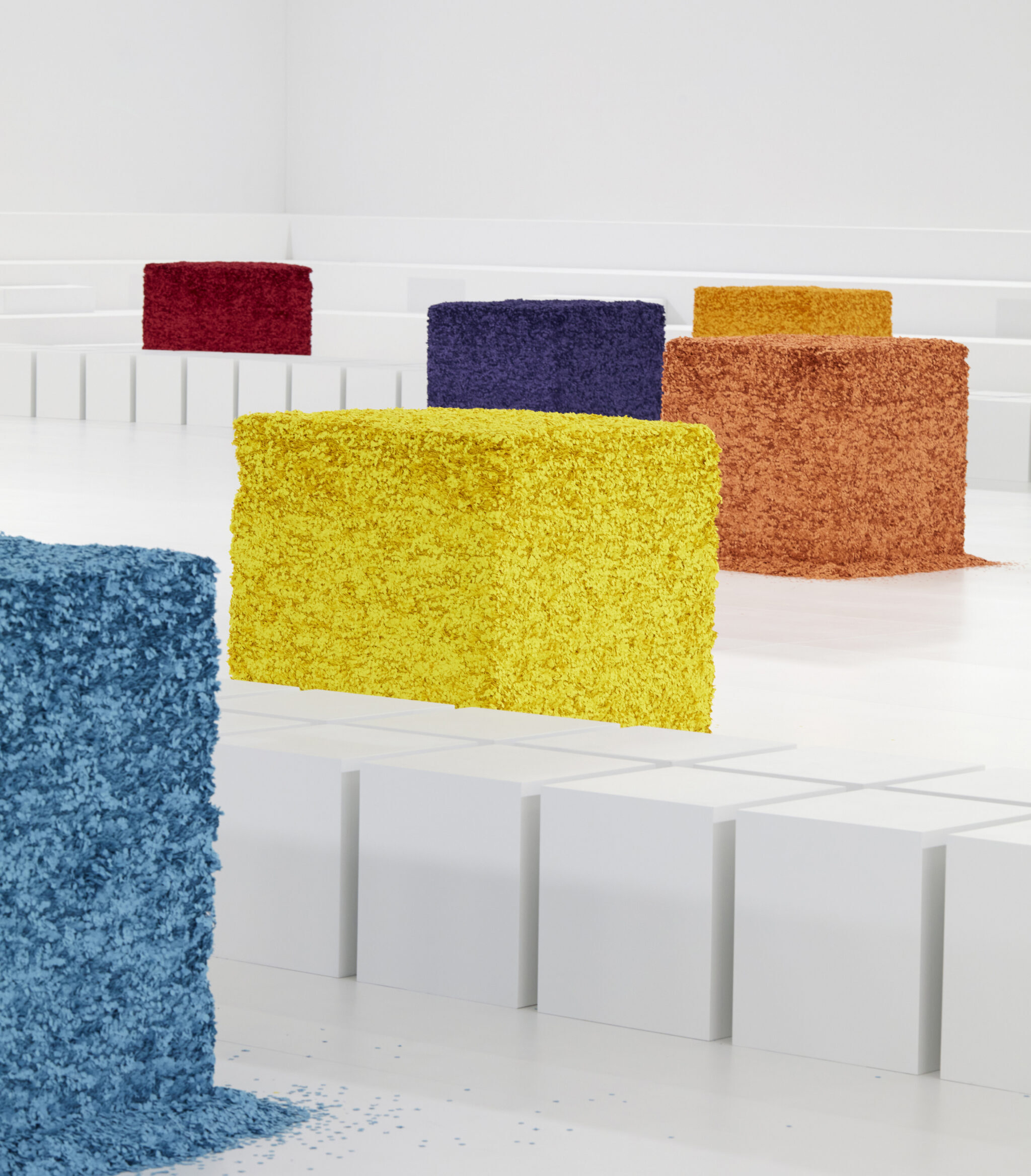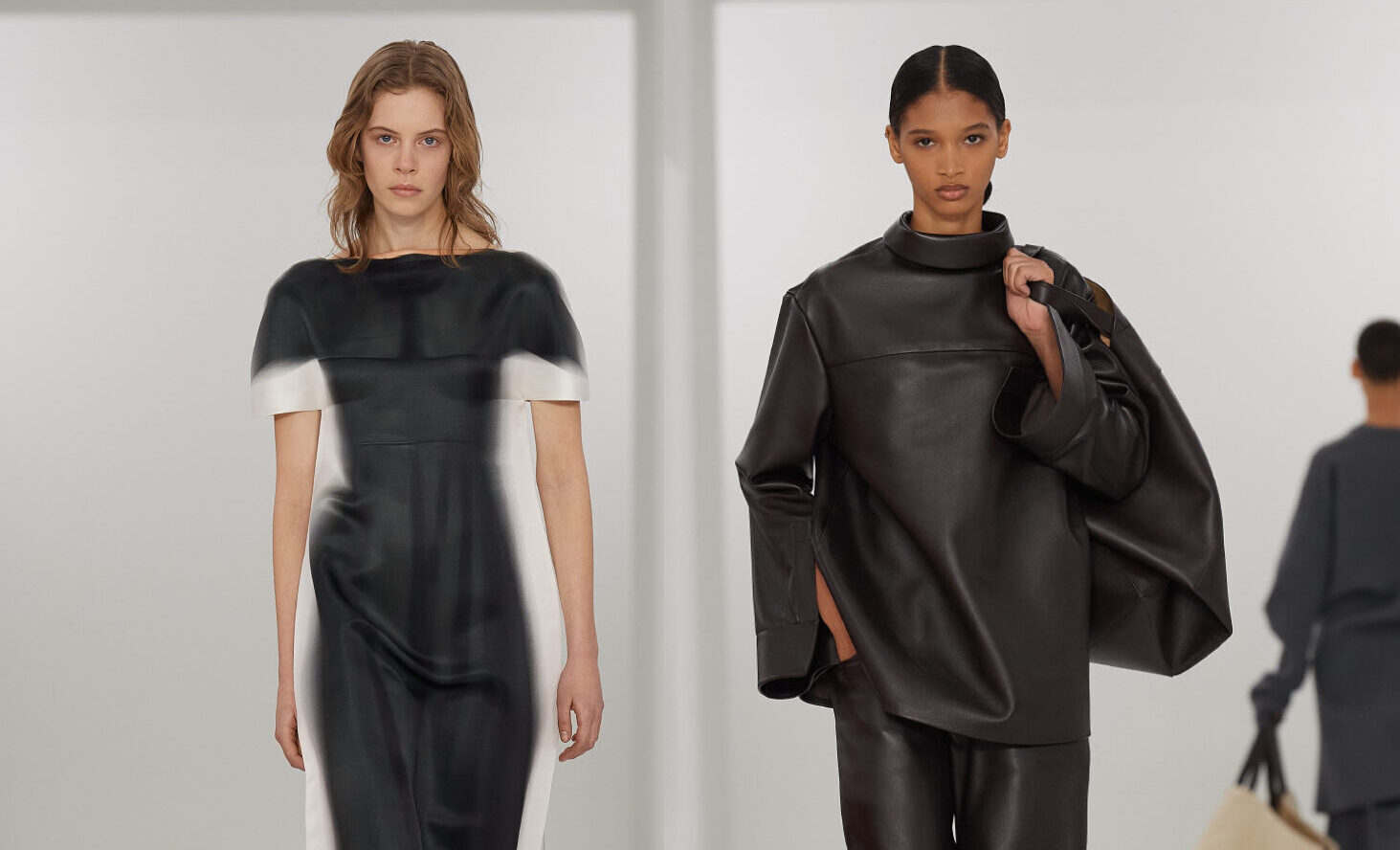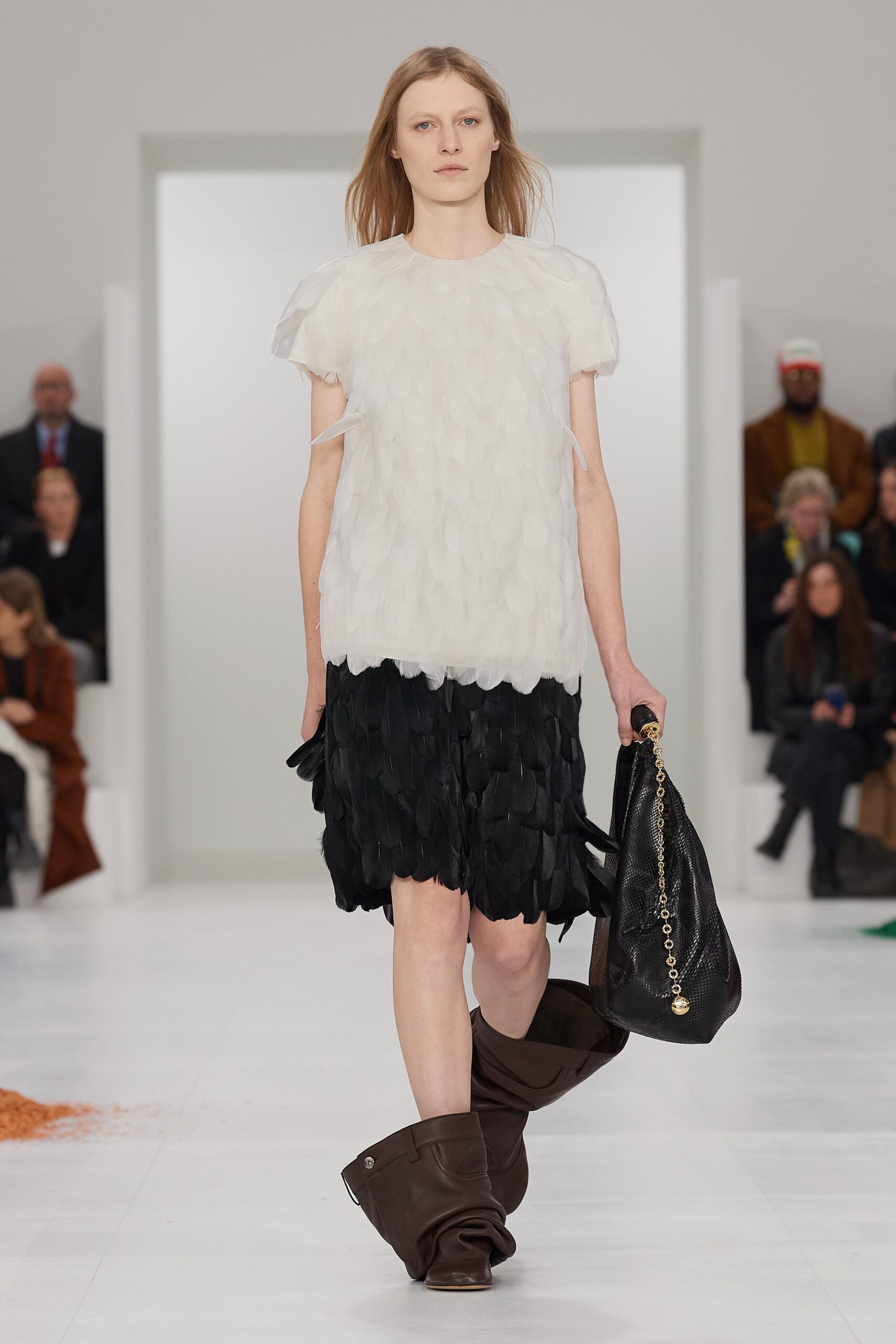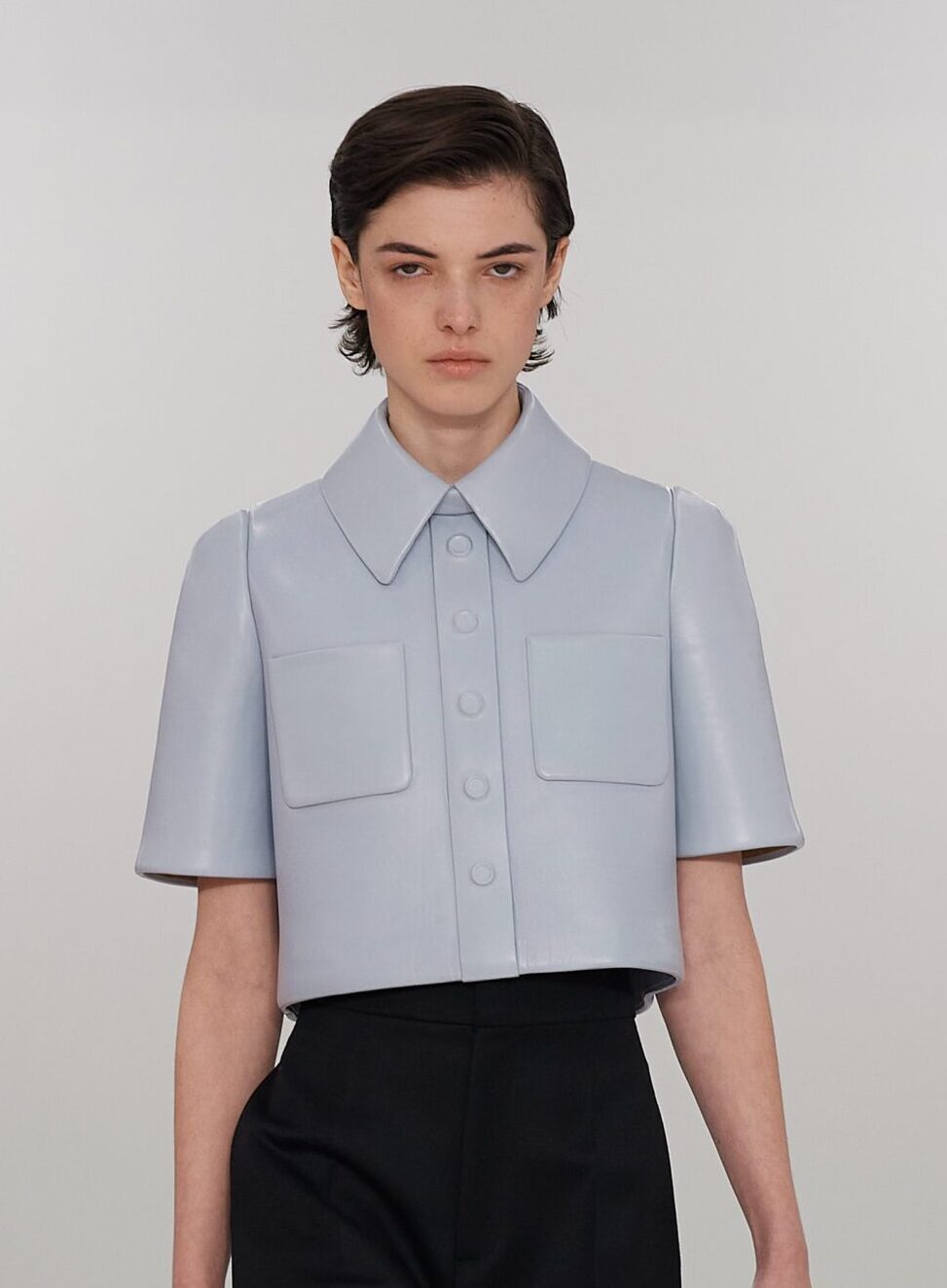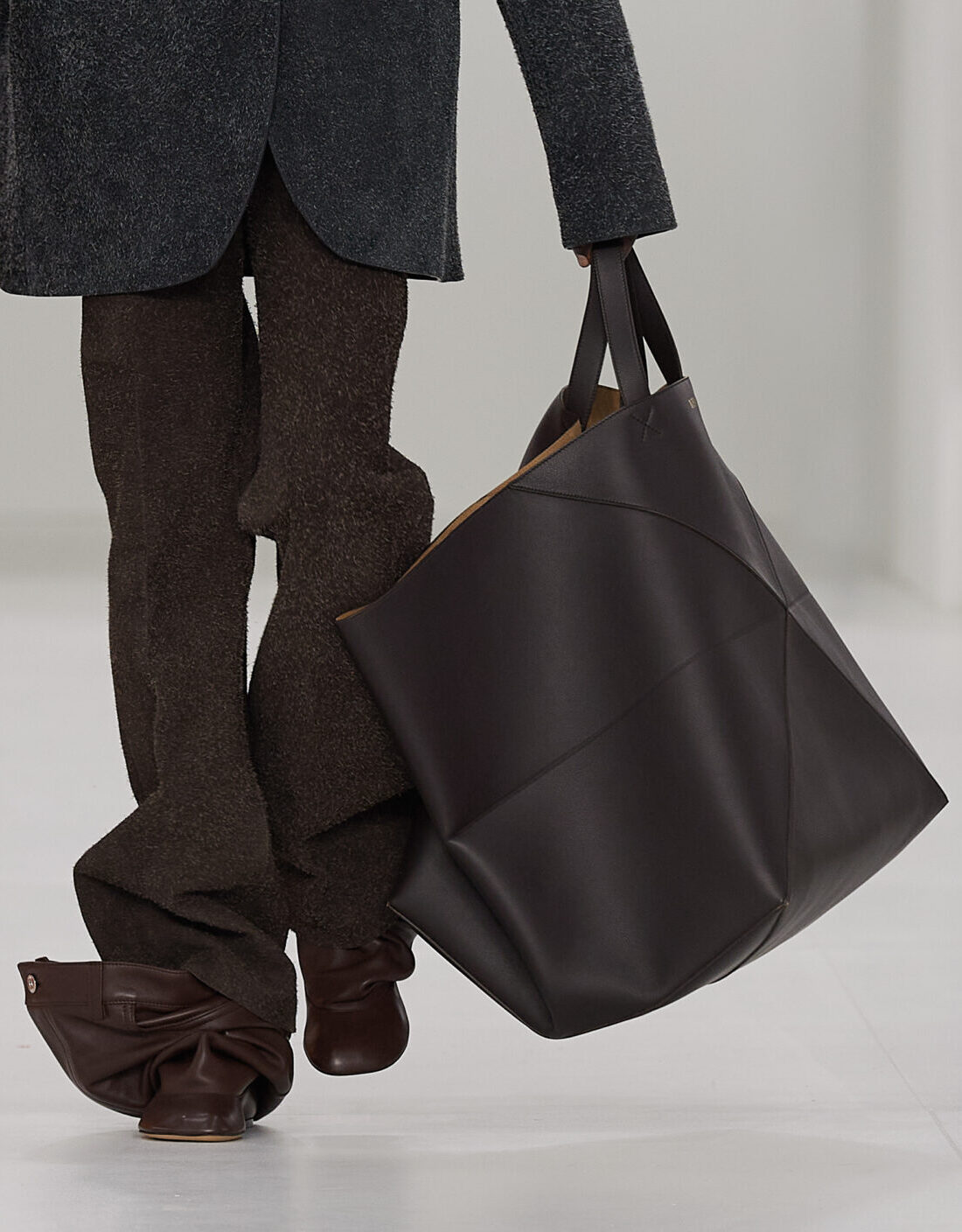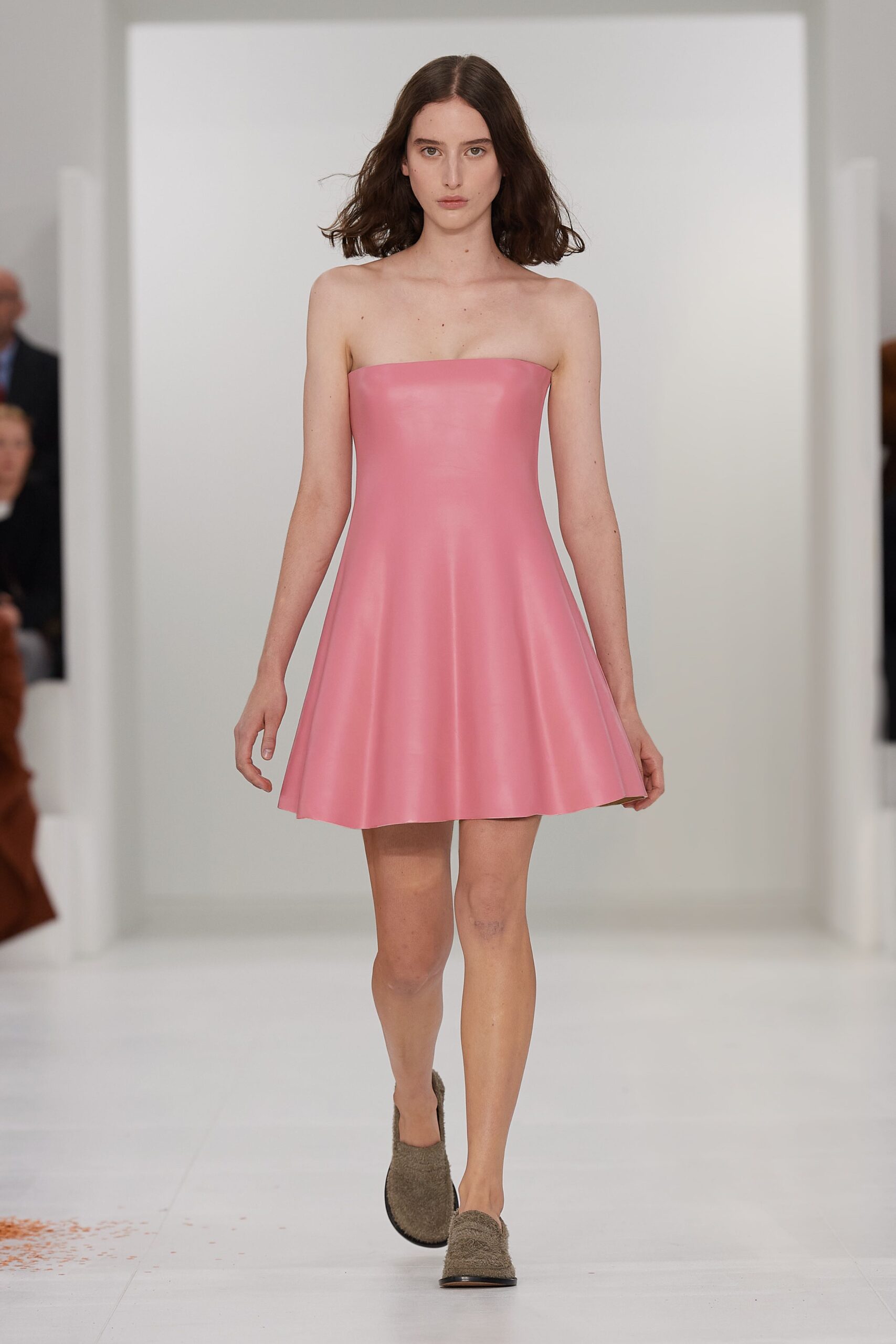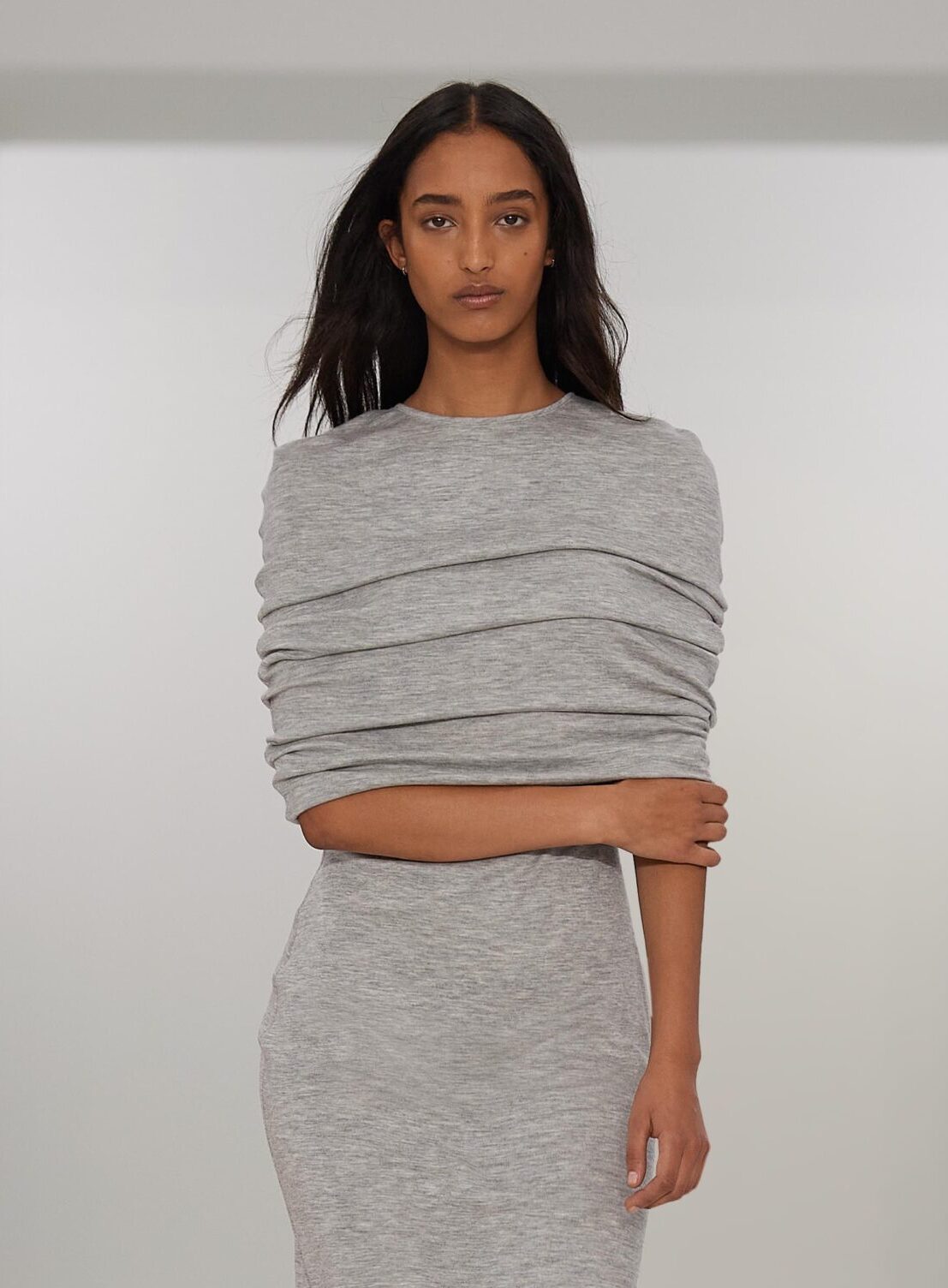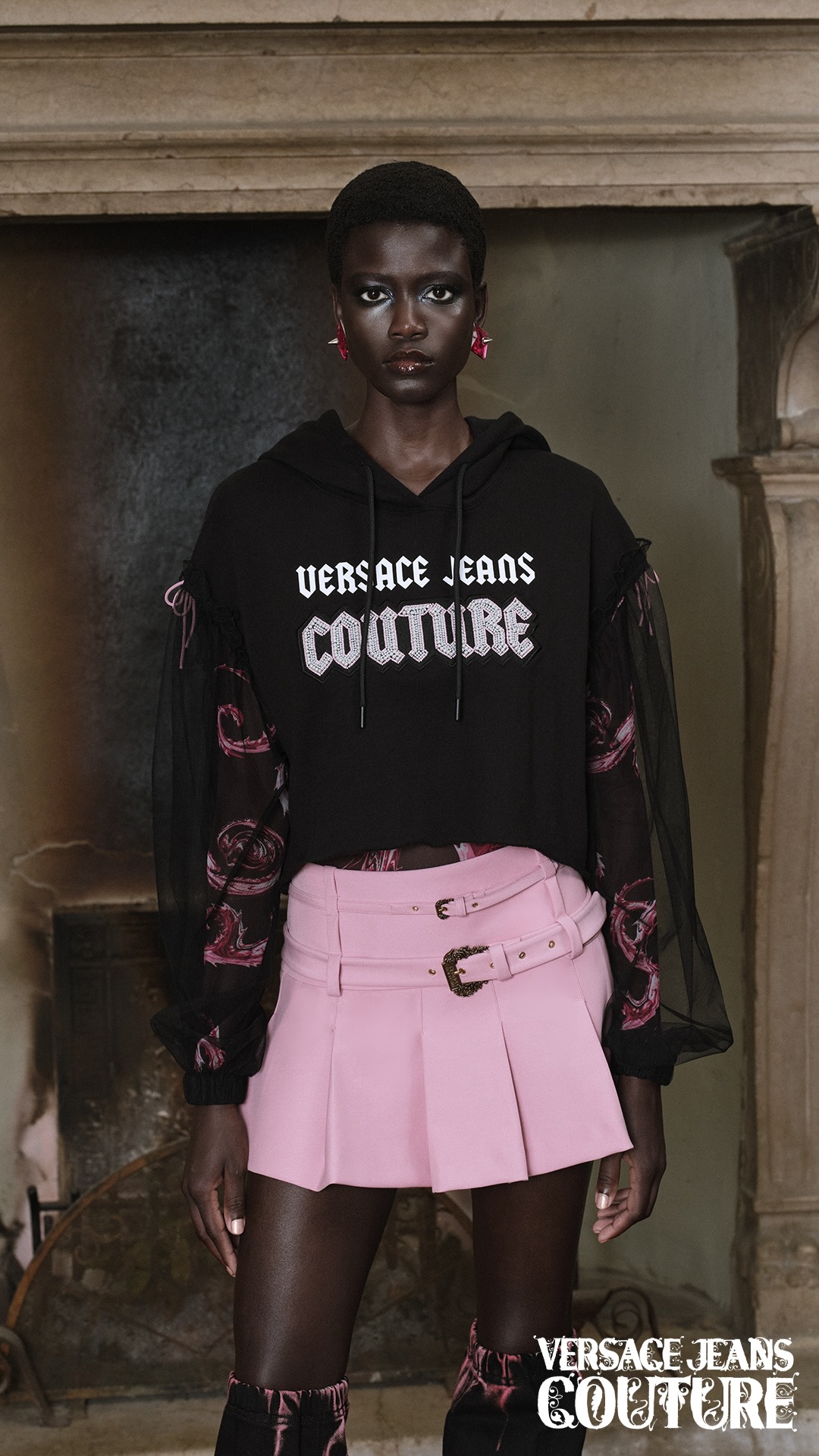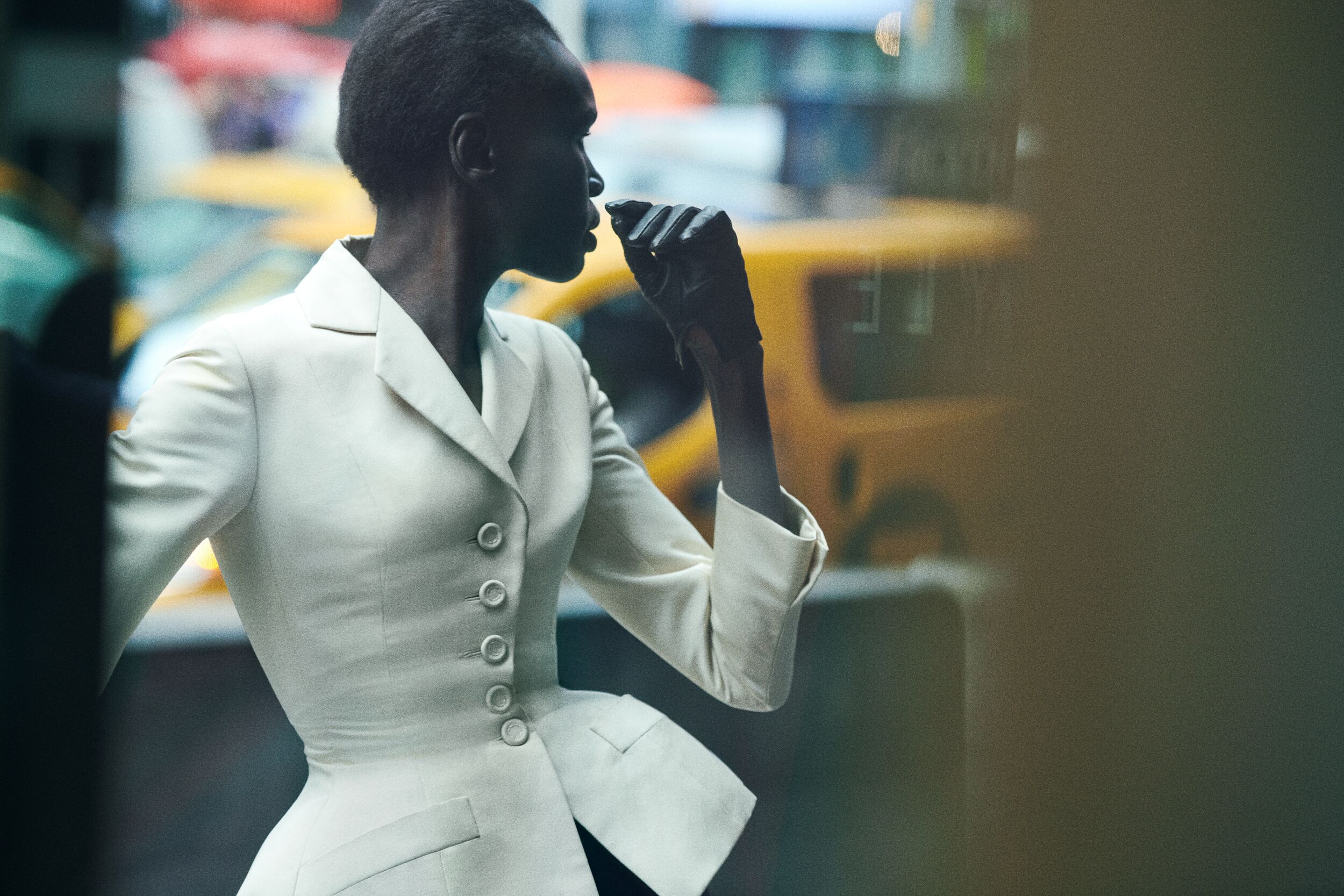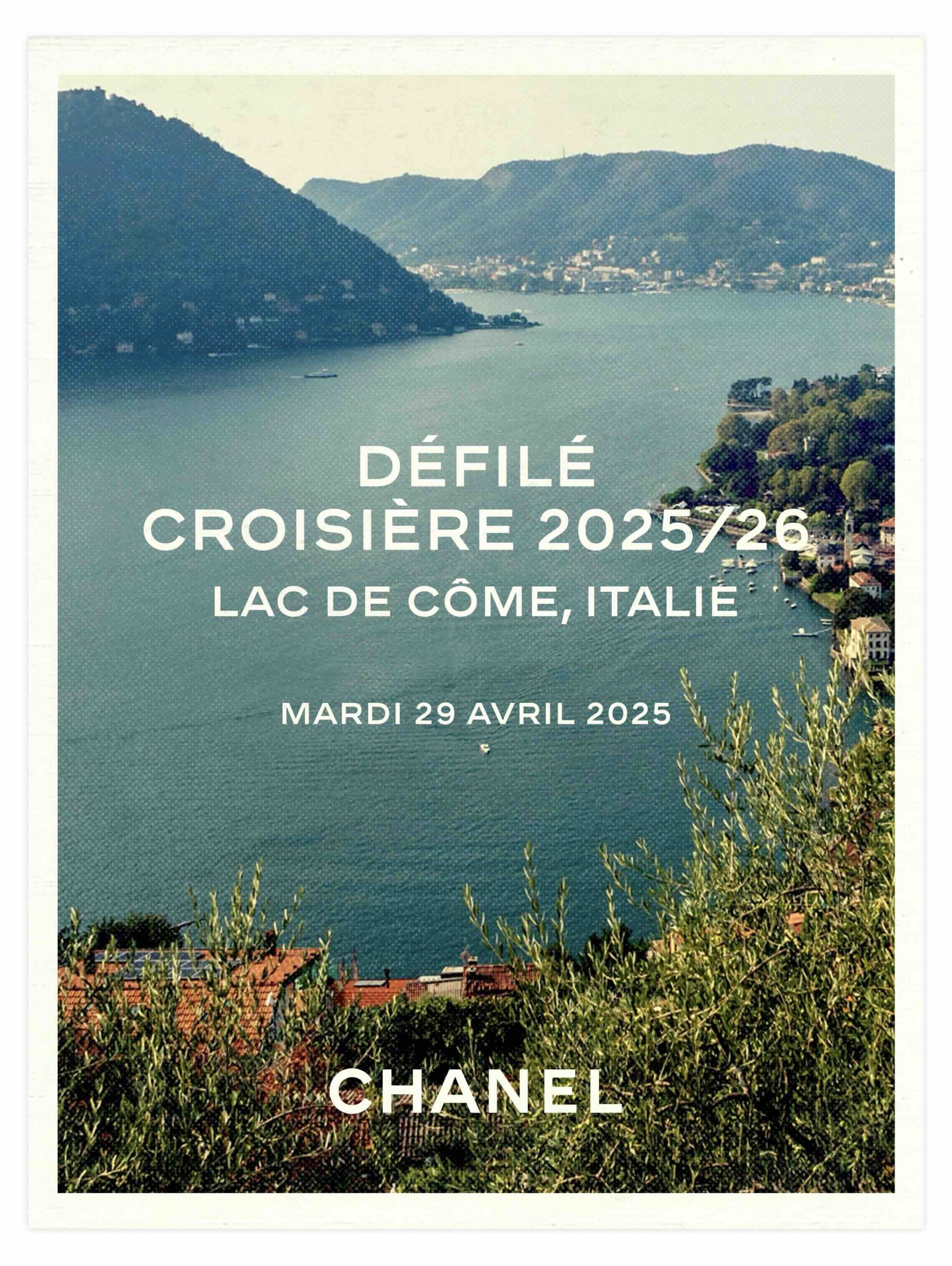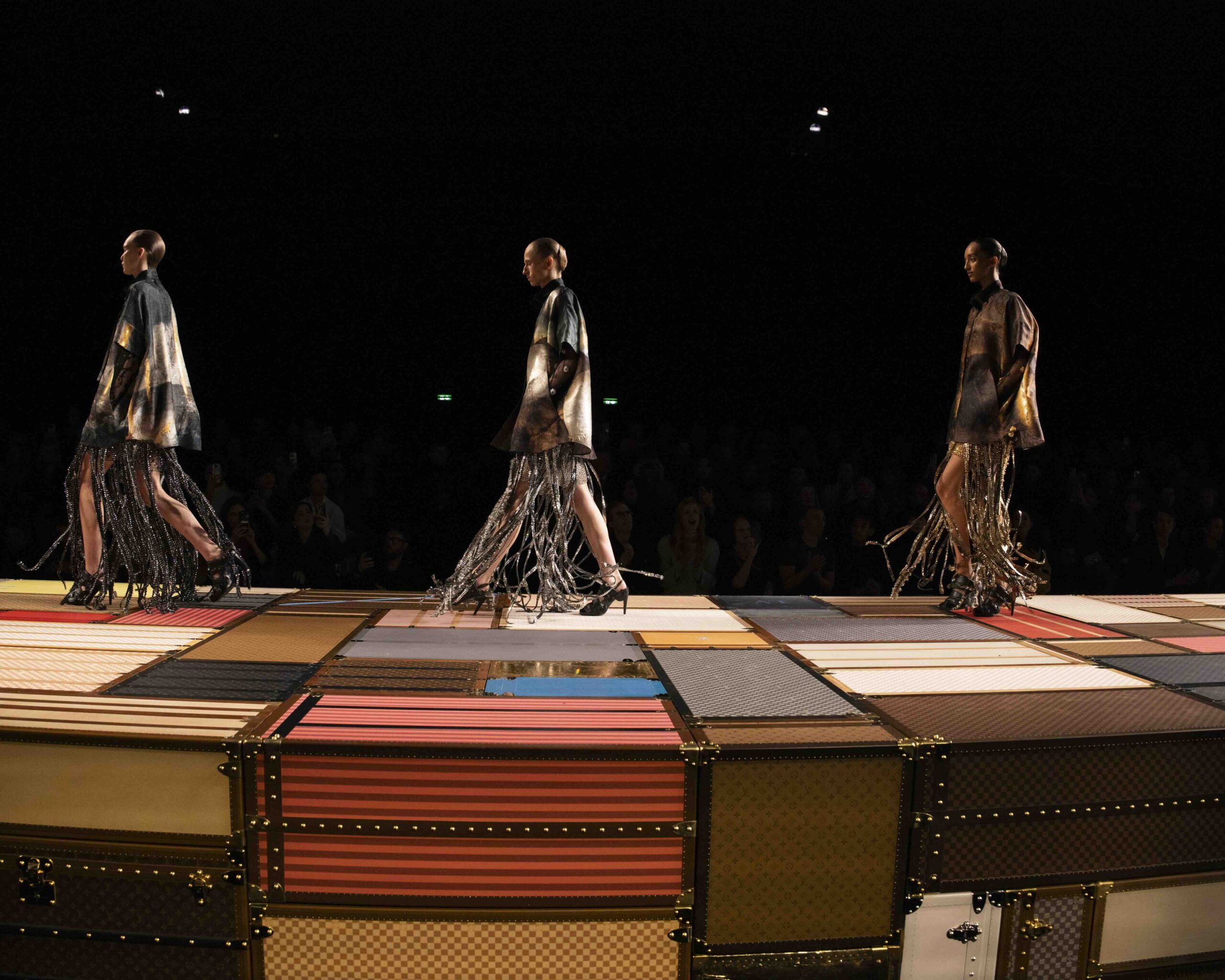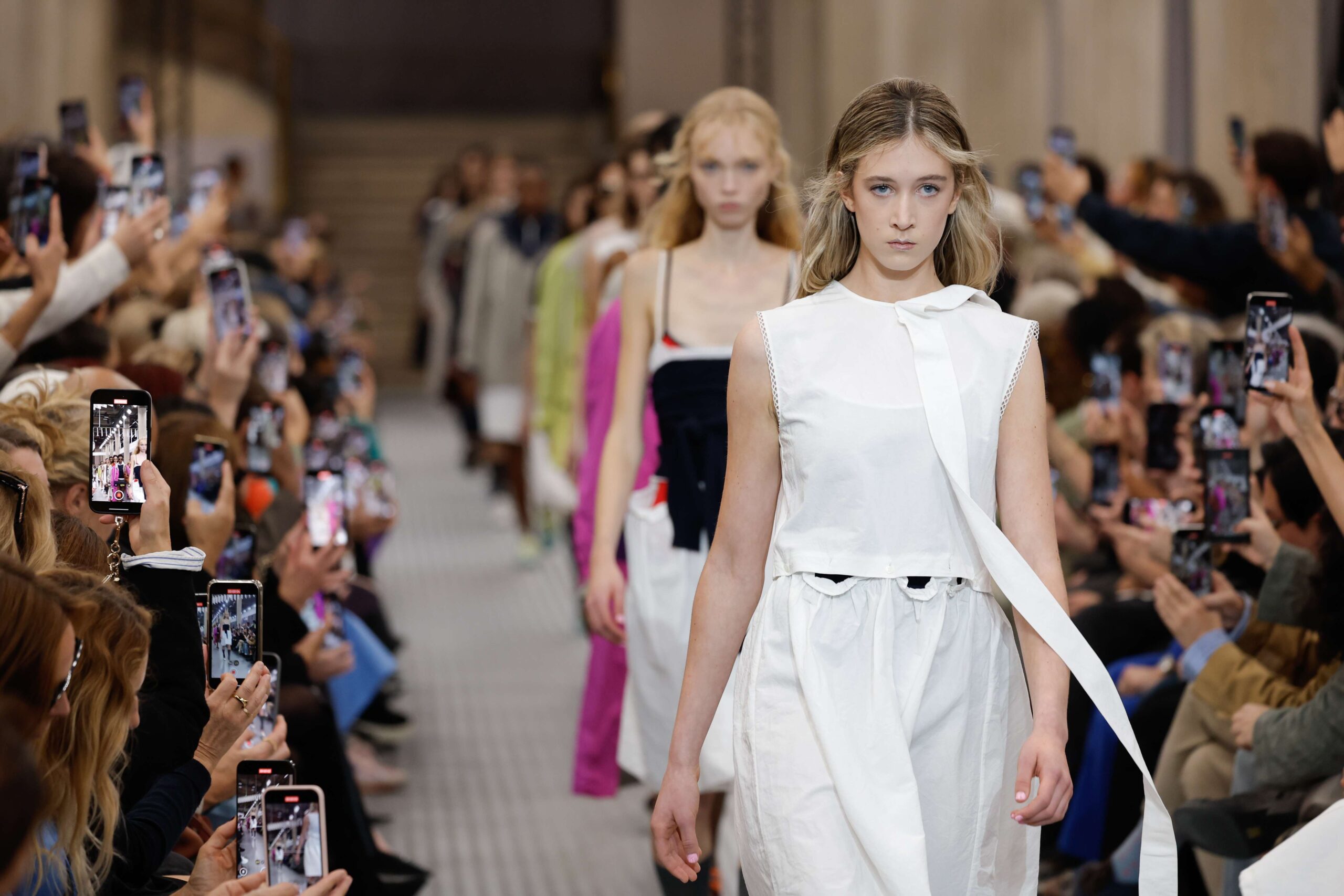Jonathan Anderson feels the need to reduce Loewe’s Autumn Winter 23 collection to its essential: in a period of total extroversion, the women’s show reduces all those elements that may seem superfluous, putting the concept of simplicity at the centre of the attention: he emphasises the importance of lines, prints and the way materials interact with the body and skin. Our present is confusing, in motion and often also staged. The Creative Director uses the image we have of the outside world nowadays as the basis for the collection to create a series of garments that play with the audience’s attentive eye, destabilising and putting them in a situation of uncertainty. “What of this is true and what is false?”: Anderson creates a series of simple white satin tunics overprinted with blurred images of coloured clothing, suggesting that we focus on what may seem unclear to us at this very moment. The deception enacted by Loewe confuses even more those who look at his “ghosts“, as he calls them, through the computer screen or smartphone, where it is even more difficult to distinguish reality from fiction, just like in our everyday life. The first looks that step into the catwalk immediately create a sense of disorientation in the audience, who focus on the prints: dresses, trench coats and faux fur coats become just an impression, like a ghost that vanishes and then returns, but you don’t know if it remains.
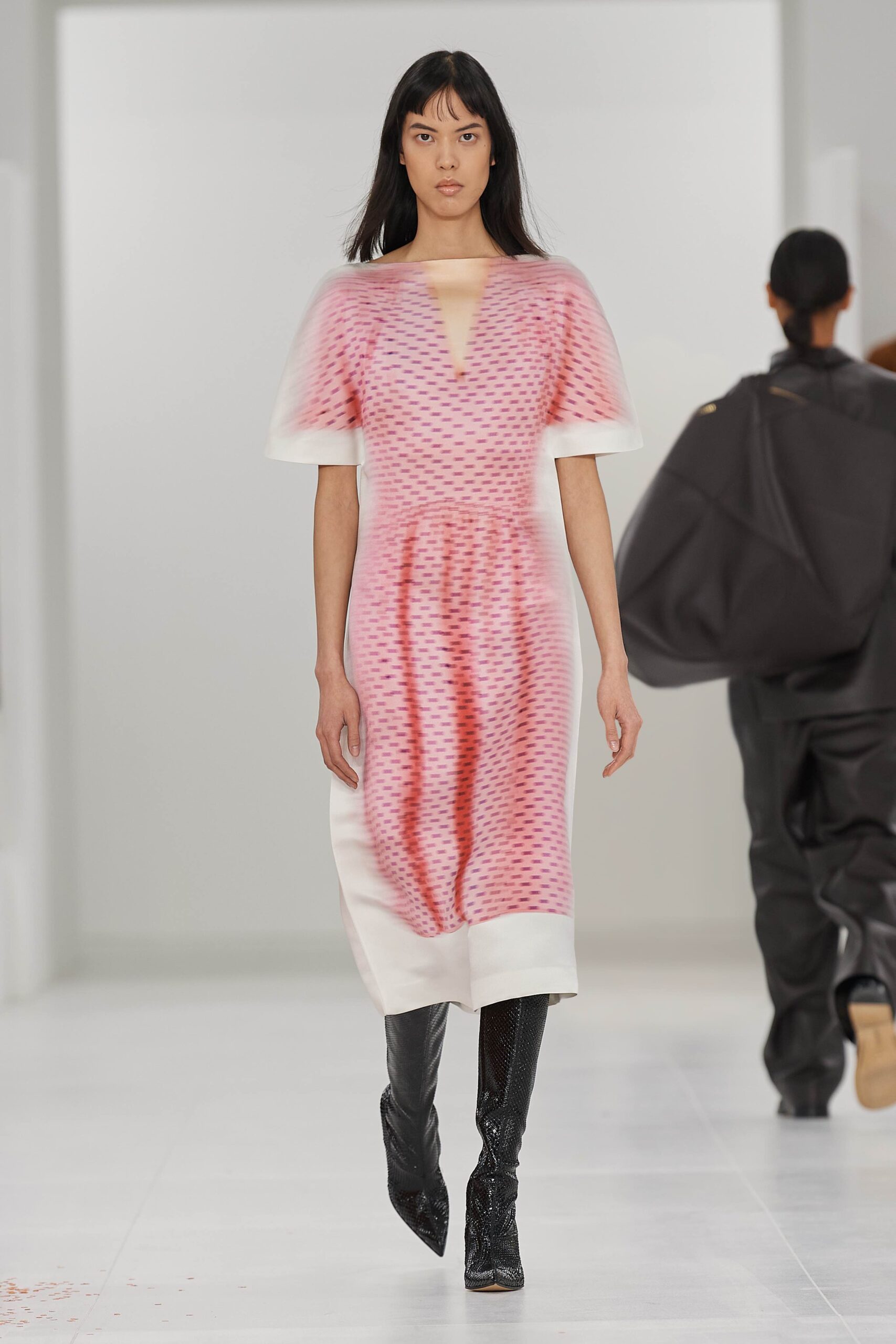
“I was fascinated about the psychology of how we see things online. The blurry aspect in motion looks like a glitch. It is out of focus.
Is it staged or not staged?
Is it the right colour, is it photoshopped?”
T-shirts and trousers are made entirely of goose feathers, while static garments, calculated to appear flat only on the screen, in reality have a rigid, tubular, protruding volume. Jonathan Anderson continues throughout the collection to mix real elements with fictional ones, so that the audience call into question every look they see passing in front of them. Simple, ordinary cardigans that appear crumpled are actually two images printed on sticky paper and pasted directly onto the models’ skin. The trimmings, buttons and details do not make one think that it is something unreal, especially for those who are not on site to observe the show more closely, who cannot realise the non-existent volume of the jumper. The garments are laid out in their simplest possible form: the lines are basic and a detail, or a gesture of the model, creates the entire silhouette. Folded arms or single pins support gathered veils that create volume and draping. Among the collection flows fluidity, curves and sudden compactness. Anderson also devotes himself to fine leather and suede, significant symbols for the brand, using the materials for entire ensembles consisting of blazers and wide-leg trousers. Loewe’s accessories become the most desired items the moment they step onto the catwalk: the Puzzle bags are oversized, the Squeeze is made of irresistibly soft leather with a squishy handle and a donut chain detail. On the footwear side, round toe boots fall softly on the ankles and exaggerated bows adorn the toes of slender pumps.
“How do you go out of a surrealist aspect to something which is more about how we see clothing now? I think it’s a kind of reduction. Wanting to refine, and refine.”
The need to simplify the complex is also demonstrated through the location: the audience is invited to the Château de Vincent, a richly detailed structure in a place with years of history behind it, located just outside the centre of Paris. After observing the fantastic landscape, guests are escorted to enter the neutral, aseptic cube in the centre of the entrance where the show will take place. Inside, everything is white except for the installations created by Lara Favaretto: 21 square blocks made up of about 10 tonnes of confetti that are scattered throughout the room, generating a passageway that is eroded by the subjects crossing through it. The artist uses fragile materials to create works that embrace the inevitability of collapse. Jonathan Anderson makes personal the concept of simplicity, but as you would expect from him, not in a simple way: the deception he poses to the public is a way of reflecting on our vision of the present and the future. A collection that looks even more confusing through the screen we are all used to looking at throughout the day, no longer wondering whether what we see is true or false.
